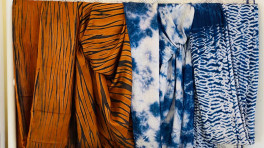Mongoose: Resilient Rikki-Tikki of Dhaka city
The Rikki-Tikki of Dhaka City is intimidated and terrorised by people, not snakes. In its short life it probably gets shooed, chased, pelted and persecuted in other terrible ways by people many a times

A plucky mongoose momentarily stood still and with a penetrating gaze looked at me when its alarmed mate ran ahead. The two mongooses were wandering on a busy wayside in Mirpur; and I had no reason to feel guilty of butting in some backyard of the mongoose. But I did, I remembered how recently we have taken over a good part of Mirpur from the wild animals.
Moreover, an intense stare of a mongoose never fails to make an impression on other animals, especially the snakes and the humans. I knew why Rudyard Kipling dramatised the glare of a mongoose named Rikki-Tikki with these words- 'his little eyes like hot coals ...' I could write that line about the Mirpur mongoose also.

Being born and raised in this subcontinent Rudyard Kipling knew first-hand how daringly the mongoose fights the deadly snakes. He immortalised a gutsy mongoose in his classic chronicles published as The Jungle Book in 1894. In his chronicle, a rescued mongoose befriends a young boy named Teddy. Teddy called the mongoose Rikki-Tikki-Tavi because every so often it made a sound like 'rikki-tikki-tsavi'.
That valiant mongoose saved Teddy and his parents' lives by killing a few mean cobras that lived in their garden. More than a century has passed by, but the story of Rikki-Tikki continues to be reprinted, anthologised and presented in cartoon, animation, video etc.
A real life mongoose attained a curious distinction in the subcontinent two decades after the creator of the fictional Rikki-Tikki received the Nobel Prize in 1907. In the streets of Colombo a real mongoose was seen faithfully following the Chilean diplomat named Pablo Neruda. Neruda became a celebrity in this part of the world only after becoming a Nobel Laureate at his old age. As a young diplomat from Chile he was followed by his pet mongoose wherever he went. Neruda named it Kiria. In all probability he was aware of the charming character Rikki-Tikki whose creator happened to be in the subcontinent nearly a century earlier.

People of the subcontinent have always valued and venerated mongoose. Mongoose kept the human neighbourhood clean by eating rats, mice, frogs, scorpions, spiders and insects. More famously it kept the snakes at bay. A mongoose is always ready to attack a snake although it does not look armed to be a big-time hunter. It weighs less than half a kilogram; has a small mouth with tiny teeth; and its miniature claws are good only for digging earth.
Mongoose perfected its snake-hunting skill over 20 million years and mastered it without acquiring the usual arsenals: teeth, claws and sinews. The essential tool of this little grisly hunter is its sharp eyes; and its technique is to go close to a snake again and again provoking it to strike repeatedly till it falls exhausted.
In a duel the mongoose faces the serpent aggressively and moves away in time to let the snake-head crash on the ground over and over again. Kipling has an incomparable couplet on a duel the brave Rikki-Tikki fought with a snake:
Eye to eye and head to head,
This shall end when one is dead;
Although a fairly robust Rikki-Tikki lives near my house in Banani there is no way I shall ever witness a mongoose-snake encounter here. I can say that not because I reason the mongoose of Banani is afraid of snakes, but because I know it is scary to people.
The wary mongoose dives into the nearest opening of the gutter and disappears as soon as it senses an inquisitive and watchful human nearby. The Rikki-Tikki of Dhaka City are intimidated and terrorised by people, not snakes. In its short life it probably gets shooed, chased, pelted and persecuted in other terrible ways by people many times.

Being a diurnal animal the mongoose has to run all its errands in broad daylight and does not have the privilege of sneaking out at night. That exposes mongoose to persecutions more varied than the nocturnal creatures like civet and binturong face.
The city-people are more comfortable with pet animals, even the stray ones, than with wild creatures. Some of us may be a little soft on birds and monkeys of the City; but most would not like the presence of sneaky ground-dwelling wildlife like mongoose, mole and monitor lizard in the neighbourhood.
Our city has a thousand times more stray dogs and cats than wild monkeys and mongoose. We seem to be eager to replace the wild with our pets, often indulgently and carelessly. We forget that the wild animal maintains earth's ecological balance as much as the pet hurts it.
To move on from pessimism let me end this story with an account of a living mongoose attaining eminence in the USA far grander than fictional Rikki-Tikki. In 1962, the zoo of Duluth port-city of Minnesota acquired an Indian mongoose that quickly became popular with visitors. Mongoose was a banned animal in the USA because it became invasive and destructive in a few islands where it was introduced.
The government ordered the zoo to kill the mongoose. But the protest against that order spread far and wide making the mongoose a superstar coast-to-coast. The mongoose was named Mr. Magoo and was visited, adored, chronicled and fictionalised like never before. Eventually the US Secretary of Interior officially granted the mongoose 'a non-political asylum'. President Kennedy said, "Let the story of Mr. Magoo stand as a classic example of government by the people."
Mr. Magoo survived President Kennedy and lived in the zoo till its natural death in 1968.


 Keep updated, follow The Business Standard's Google news channel
Keep updated, follow The Business Standard's Google news channel
















